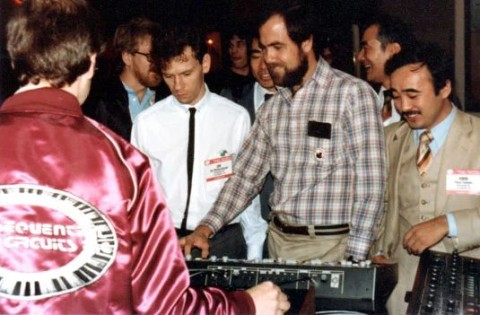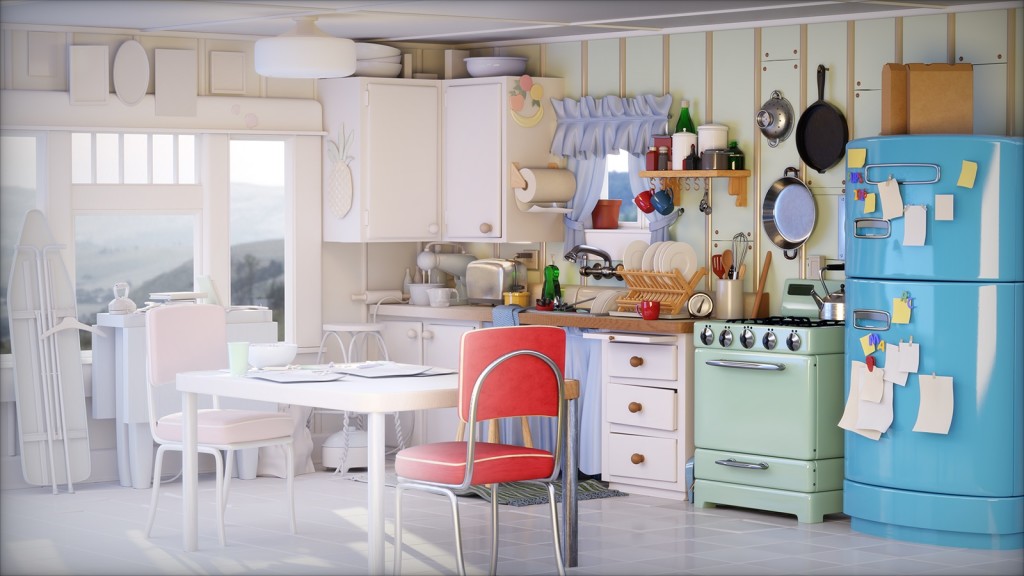The scene format that began its life at Pixar Animation Studios is poised to become a standard for all things 3D – scenes, but also tools, data, and workflows. And yes, that could make this into 3D’s MIDI moment. It’s not that OpenUSD is anything like MIDI – it isn’t. But it has the same potential to be a standard that transforms a whole creative field, and that becomes more than just a “format.”
The announcement: today, Pixar, Adobe, Apple, Autodesk, and NVIDIA announced the launch of the Alliance for OpenUSD (AOUSD), a new initiative hosted by the Linux Foundation “to promote the standardization, development, evolution, and growth of the Open Universal Scene Description (OpenUSD) technology.” And to explore strange new worlds, seek out new life and new digital partners, to boldly describes scenes and digital twins across workflows that have never been described before. The usual.

Okay, before people start throwing their workstations at my head about the MIDI thing, there’s a reason to make that comparison. And I know talking about an early 80s serial protocol could be practically pejorative. (I’m picturing also serious 3D professionals looking askance at people mucking with their synthpop band or something, although – to be fair, I do know quite a few people who do moonlight!)
But there are rare times in creative industries where a standard can be more than itself – and where the impetus for the standard comes organically from long-standing practices inside that industry and industry partners. It’s also fair to say that MIDI, crude as it is, came to reshape a lot of the worlds it touched – defining not only interoperability between a ton of hardware and software, but sound on mobile devices, interactive sound in games, and generally how music is described digitally.
OpenUSD is a far more sophisticated format, but what’s special about it is that not only is it exceptionally good at describing scenes, but other tasks, too. The 3D scenes part is essential – it’s there in the name (Open Universal Scene Description). But technologists close to the format, particularly those with a long run with it back to Pixar, are quick to observe that it’s more than a scene format, and even more than a way of providing interoperability. It can open up methods for collaboration, exchange between workflows, and even new possibilities online and with streaming. I’m not going to say the word that sounds like “Yeti Averse,” but in fact immersive 3D environments across gaming and work are missing complete interoperable ways of describing themselves online.
This is Autodesk Maya centered, but also a good artist-friendly rundown. And for those of us who grew up with teapots everywhere, now we get a whole freakin’ kitchen – literally:
That brings us to the partners here – it’s quite a list, with Pixar joined by Adobe, Apple, Autodesk, and NVIDIA. It’s significant that Apple is onboard as they get into VisionOS, and that NVIDIA is there with everything from mobile gaming to high-end industrial applications. And of course with NVIDIA you get the Omniverse platform, and Autodesk and Adobe deliver lots of the key creative tools.

For those of us who grew up with teapots everywhere, now we get a whole freakin’ kitchen – literally.
Image of OpenUSD scene “the Pixar kitchen” from clay render (left) to full-render (right).
The project will be housed at The Linux Foundation JDF – the Linux Foundation even joined in announcing the process. (Look, it’s been a long time since kernel devs and, uh, Linus himself were swearing at NVIDIA, happily. Also – Linux is the primary dev OS for OpenUSD, even if it’s used on macOS and Windows clients. See below.) OpenUSD begins as a de facto standard, but it is important that it have this path to recognition through the ISO, which is the stated goal. And that’s where my MIDI comparisons should absolutely end – these are massive industrial players, not like a half dozen dudes you can get together at the NAMM show.
But it’s also not that this is an abstract process divorced from real-world use. OpenUSD is already powering a ton of stuff for end users as varied as artists and people building factories. (I’m sure there’s an industrial techno partnership in there somewhere. Erm. Let’s stick with the Pixar image, though.)
The bottom line is, OpenUSD is more than just another import/export format, and this is more than just Pixar or NVIDIA telling you to use it. There’s real potential here for more fluid 3D experiences, which I think will matter to artists working together as much as it will those factory contractors.
And while some open source tools were notably absent from the announcement, you can also expect progress on that side, too – with The Linux Foundation process being a good symbolic cue.
More on OpenUSD
NVIDIA has a great run-down of what OpenUSD is and does:
Universal Scene Description: An open and extensible ecosystem for 3D worlds
But you can also learn a lot from Pixar’s official repository. That includes everything from build instructions to API details. (And it’s fun that you’re browsing Pixar’s GitHub. Pixar domains were also among some of the first CDM readers, so thanks, y’all!)
https://github.com/PixarAnimationStudios/OpenUSD
Best of all is this resource AwesomeUSD. It skips straight to everything this format can do for developers and artists, and if I seem weirdly optimistic, well – get a load of this site. This is an immediate answer to “but I don’t care about ISO certification and I’m not building a digital twin of a factory.” If you’re a 3D artist or interested in 3D collaboration – or, to bring this into CDM territory, anyone interested in audiovisual expression, collaboration, delivery, and the future of immersion – this will cover both what you can do in your current tools and why the format is cool.

Awesome USD
A curated list of awesome Universal Scene Description (USD) resources and projects. These are hand-picked resources and projects that I find awesome. You might find more or others at the ASWF USD Working Group Wiki.
Curated by @maticodes
https://github.com/matiascodesal/awesome-usd
Watch this awesomeness. I’m more bullish about this than the other USD.
All photos courtesy NVIDIA and Pixar. At top, Image of a scene from Pixar’s Coco, showcasing a breakdown of the complex set created using OpenUSD assets (left) to the final render (right).